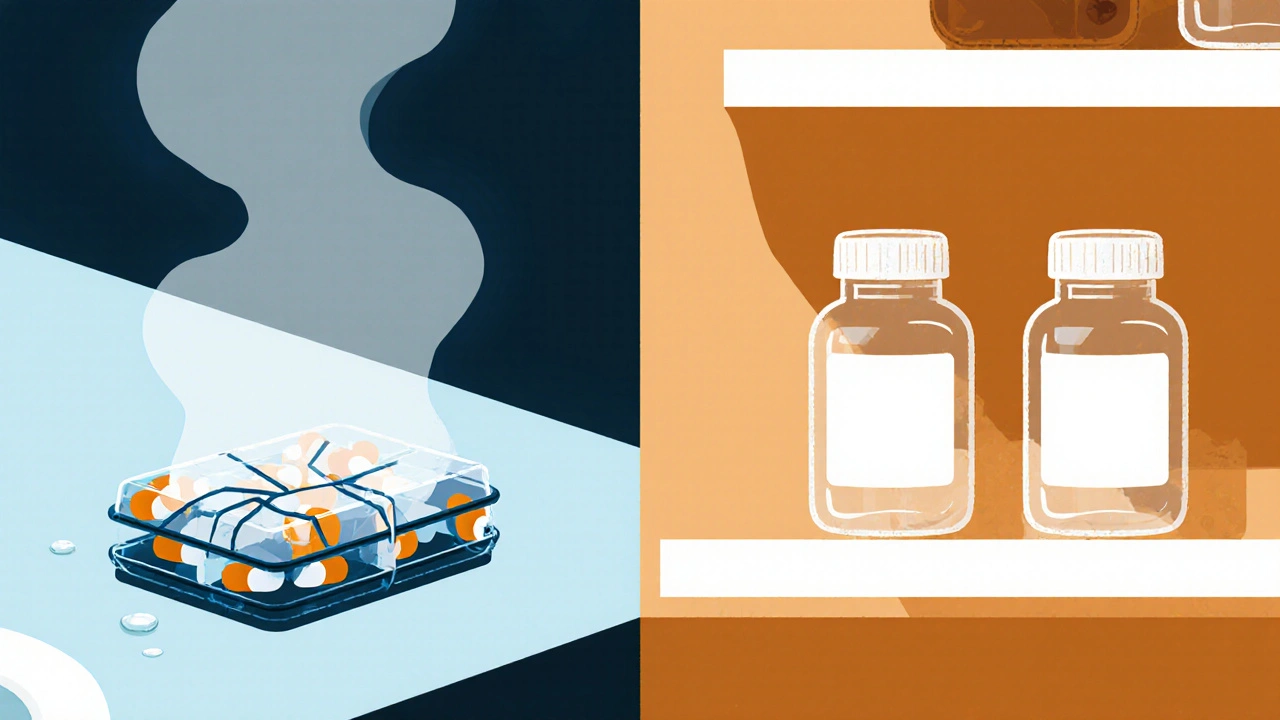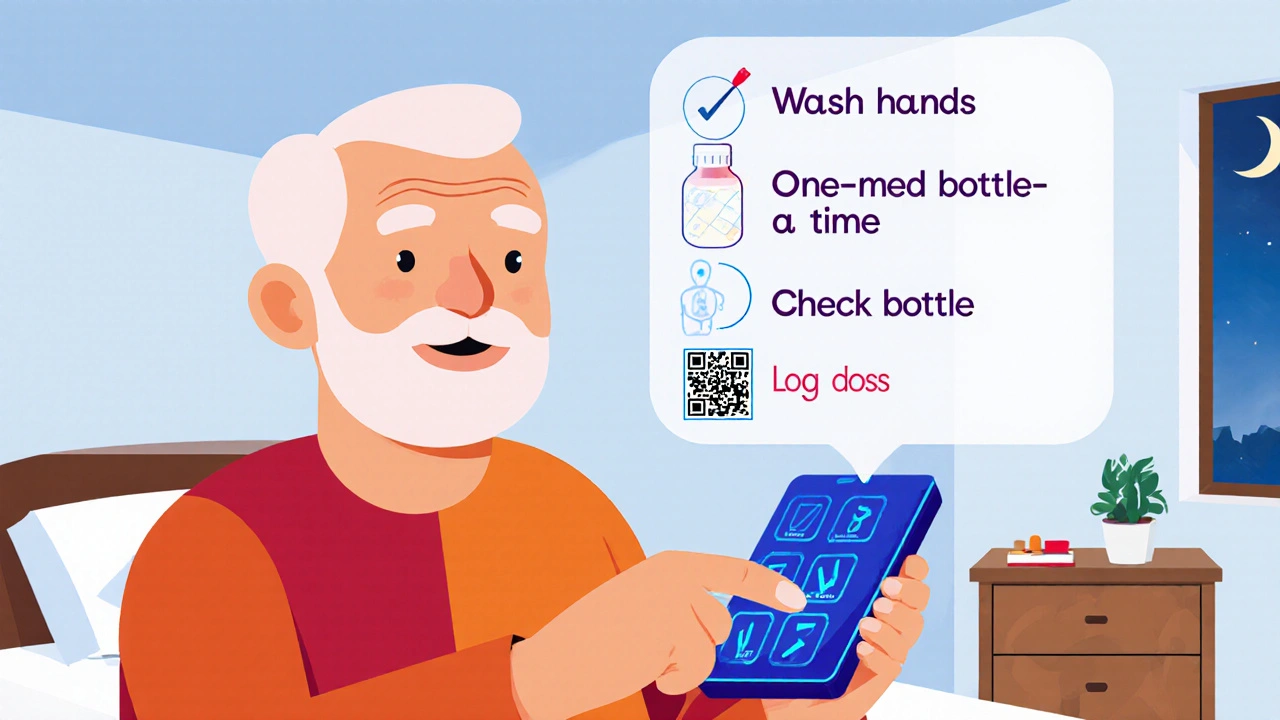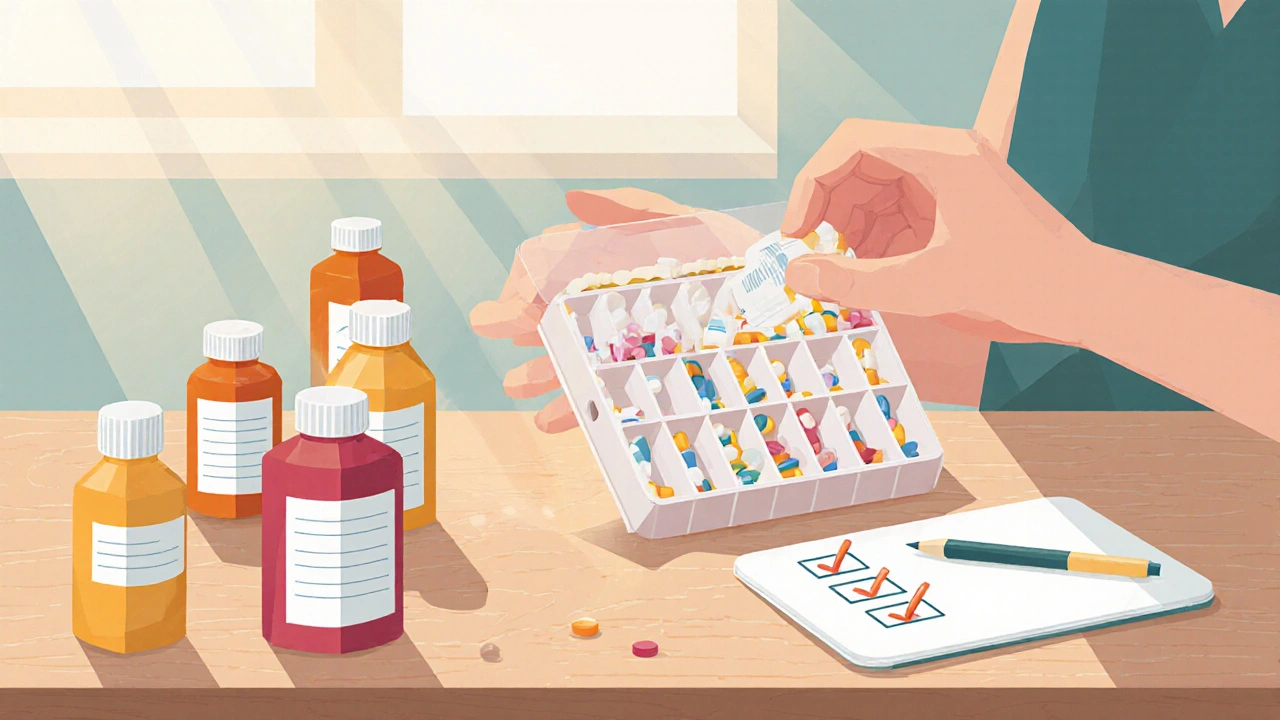Using a pill organizer seems simple-just dump your meds into compartments and go. But if you’re not careful, it can turn into a silent danger. Every year, thousands of people accidentally overdose because they mixed up their pills, filled the organizer wrong, or kept it in the bathroom. The truth? A pill organizer can save your life-or end it. It’s not about having the right box. It’s about how you use it.
Why Most People Get It Wrong
Most overdoses with pill organizers don’t happen because the device broke. They happen because the person using it didn’t follow basic safety rules. A 2022 study in the Journal of the American Geriatrics Society found that improper use increases overdose risk by 23% in older adults. That’s not a small number. It’s a pattern. People fill their organizers using old prescription labels. They put ‘as needed’ painkillers right next to daily heart meds. They store the box near the shower, where steam softens pills and makes them stick together. And they never double-check what’s inside before swallowing.The biggest mistake? Mixing PRN (as-needed) medications with scheduled ones. If you put ibuprofen or oxycodone in your Monday morning slot, you’ll take it every day-even if you don’t need it. That’s how people end up in the ER. According to WebMD and Memorial Sloan Kettering, 38% of accidental overdoses from pill organizers come from this one error.
What Kind of Pill Organizer Should You Use?
Not all pill boxes are created equal. Basic weekly organizers with one compartment per day cost under $10. But if you take meds four times a day, you need a 7-day x 4-compartment model. These cost $5-$15. If you forget to take pills often, consider an electronic organizer with alarms. These range from $25 to $100 and can send alerts, track openings, and even notify caregivers if you miss a dose.But here’s the catch: electronic doesn’t always mean safer. If the alarm goes off and you don’t know which pill is which, you’re still at risk. The best organizers have clear labeling-large text, color-coded compartments, and if needed, Braille. Some have child-resistant locks. If you have kids or grandkids around, this isn’t optional. The ASTM F3130-15 standard ensures the lid won’t pop open easily. Look for it on the box.
Also, avoid organizers made of cheap plastic that cracks over time. Cracked compartments can trap pills, making them hard to remove-or worse, letting moisture in. Moisture ruins pills. It turns them into sticky clumps or weakens their effectiveness. Always choose moisture-resistant materials.
What Medications Should NEVER Go in a Pill Organizer?
Some pills just don’t belong in a compartment. Here’s the list:- Liquid medications-they leak and ruin everything.
- Refrigerated drugs-like insulin or some antibiotics. Room temperature ruins them.
- Chewable, dissolvable, or sublingual pills-they stick together or dissolve prematurely.
- Soft gel capsules-they melt and stick to the plastic, making them impossible to remove cleanly.
- PRN (as-needed) medications-painkillers, anti-anxiety meds, or rescue inhalers. These should stay in their original bottles, labeled clearly, and kept separate.
Even if your pill looks fine, check the label. If it says “store in original container” or “protect from moisture,” don’t put it in the organizer. That’s not a suggestion-it’s a safety rule.

How to Fill Your Pill Organizer Correctly
There’s a proven, step-by-step method used by pharmacists and hospitals. Follow it exactly:- Get your current medication list-from your doctor or pharmacy. Not the old one. Not the one you remember. The current one. Update it if anything changed in the last week.
- Wash your hands-for 20 seconds with soap. You’re handling medicine. Clean hands prevent contamination.
- Keep all original bottles out-on the table next to you. Never fill from memory. Never fill while distracted.
- Fill one medication at a time-don’t grab all the pills at once. Take one bottle. Count the pills. Put them in the correct compartment. Then move to the next. This cuts double-dosing errors by 63%, according to Memorial Sloan Kettering.
- Verify each compartment-after filling, go back and check each one. Compare what’s inside to your medication list. If two pills look alike, use a pill splitter with color coding or keep them in separate organizers.
- Write it down-note the date and time you filled it. If you miss a dose later, you’ll know if it’s because you forgot-or because you took two.
This process takes at least 15 minutes. If you’re filling more than five different meds, add 5 extra minutes per pill. Don’t rush. Speed kills here.
Where to Store Your Pill Organizer
Never store it in the bathroom. Steam from showers degrades pills. A 2022 Hero Health study found that humidity speeds up pill breakdown by 47%. Moisture turns tablets into mush and capsules into glue.Keep your organizer in a cool, dry place. A bedroom drawer. A kitchen cabinet away from the stove. A shelf on your nightstand. Temperature should stay below 86°F (30°C). Humidity under 60%. If you live in a humid place like Melbourne, keep it in an airtight container with a silica gel packet.
And never leave it where a child or pet can reach it. Even if it has a child-resistant lid, curious hands find ways. If you have young kids, lock it up.
How to Avoid Accidental Overdoses
Here’s what actually works:- Never refill without checking your current prescription-28% of errors happen because people use old bottle labels. Your doctor changed your dose? Your organizer doesn’t know.
- Set phone alarms-15 minutes before each dose. This gives you time to verify the pill before you take it. Studies show this cuts verification errors by 44%.
- Keep original bottles nearby-68% of errors happen because people don’t cross-check. The organizer isn’t your only source of truth.
- Use a pill log-write down what you took and when. If you feel off, you can show it to your doctor.
- Ask your pharmacist to fill it for you-68% of U.S. pharmacies now offer free filling with pharmacist verification. That single step cuts errors by 52%.
One Reddit user, Caregiver45, shared that after following the one-medication-at-a-time method, her mother’s hospital visits dropped from four a year to one. That’s not luck. That’s protocol.

What to Do If You’re Unsure
If you’re confused about a pill’s name, dose, or timing-stop. Don’t guess. Call your pharmacist. Or use a free app like Medisafe or MyTherapy that scans your pills and reminds you. Some smart organizers now have QR codes on the lid that link to video guides on how to take each med. Pfizer is testing this in pilot programs, and it’s already helping patients avoid mistakes.If you’ve ever taken a pill and thought, “Wait, is this the one I already took?”-you’re not alone. That’s your brain telling you something’s wrong. Pause. Check your list. Check your bottles. Check your organizer. Better safe than sorry.
When to Replace Your Pill Organizer
Organizers don’t last forever. Plastic gets brittle. Compartments crack. Labels fade. The National Council on Aging found that 28% of seniors still use organizers older than 10 years. That’s dangerous.Replace yours every 12-18 months. Or sooner if:
- The lid doesn’t snap shut properly
- Compartments are sticky or discolored
- Labels are hard to read
- You’ve dropped it multiple times
When you get a new one, transfer your meds using the same careful method. Don’t just dump everything in. You’re not saving time-you’re risking your health.
Final Thought: It’s Not About the Box
A pill organizer is just a tool. It doesn’t make you safe. You do. The real safety comes from habits: double-checking, writing things down, keeping original bottles, and never mixing PRN meds. It’s about respect-for your body, your meds, and your life.Medication errors kill more people than car accidents in Australia each year. You don’t have to be a statistic. Just follow the steps. Take your time. Stay calm. And when in doubt-ask.
Can I put all my pills in one organizer?
No-not all of them. Avoid putting liquids, refrigerated drugs, chewables, soft gels, or ‘as-needed’ pills (like painkillers) in a pill organizer. Only use it for solid, daily medications that don’t require special storage. Always check the label on each bottle first.
Is it safe to refill my pill organizer from old pill bottles?
No. Using old labels is one of the top causes of overdoses. Your doctor may have changed your dose, switched brands, or stopped a medication. Always refill using your current, up-to-date medication list from your pharmacy or doctor.
Why shouldn’t I keep my pill organizer in the bathroom?
Bathrooms are humid. Steam from showers can soften pills, cause them to stick together, or break down the active ingredients. Studies show medication degradation increases by 47% in high-humidity environments. Store your organizer in a cool, dry place like a bedroom drawer.
Can I use a pill organizer if I take 10 or more medications?
Yes, but use a 7-day x 4-compartment organizer or multiple boxes. Keep PRN meds separate. Consider a smart organizer with alarms and tracking. Always ask your pharmacist to help you set it up-they can spot interactions and suggest better organization.
What should I do if I accidentally take two pills?
Don’t panic. Don’t take another. Call your pharmacist or poison control immediately. Have your medication list ready. Most double doses aren’t life-threatening, but some can be-especially with blood thinners, heart meds, or opioids. Always err on the side of caution.
Are electronic pill organizers worth the cost?
If you often forget doses or live alone, yes. Models with alarms, tracking, and caregiver alerts can reduce missed doses by up to 40%. Some are covered by Medicare if you have four or more chronic conditions. For most people, a simple organizer works fine-if used correctly.


Shubham Semwal
Bro, you think this is complicated? I’ve been filling my mom’s organizer since she got dementia and let me tell you - if you don’t label everything in Sharpie and take a pic before closing it, you’re just playing Russian roulette with her heart meds. I once put a 10mg lisinopril in the AM slot instead of 5mg - she went into hypotension shock. Took her 3 days to recover. Don’t be that guy.